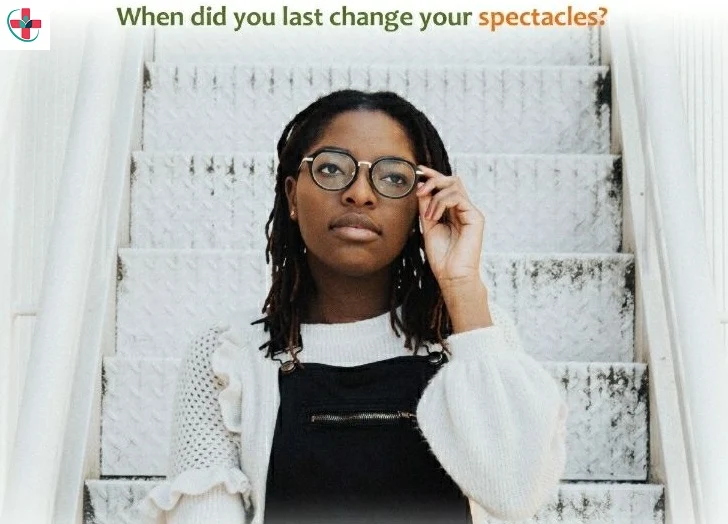Many of us find the perfect pair of eyeglasses and stick with them until.... well, forever, if we can still see with them. But just because you can see out of your glasses doesn’t mean they’re still doing their job, especially if it’s been over two years.
Unlike a pair of pants that don't fit a growing child after a summer, knowing when it's time to update your glasses prescription isn’t always obvious. Vision changes may happen slowly, so if you delay your annual trip to the optometrist, you may not notice how bad your vision has gotten.
Waiting until you have a hard time seeing can put stress on your eyes. How often should you get new glasses? Optometrists recommend updating your prescription every two years, or earlier if needed.
But how do you know if you need an updated prescription before your yearly visit? An obvious sign is a blurry vision. However, not all signs are obvious, so keep an eye out — pun intended — for these hints that you need new glasses:
1. Headaches
People usually fail to associate their recurring headaches to a change in their vision – one of the earliest signs of change. Most of the time, people don’t even notice the slightest change in their vision; but what they also don’t realize is that their brain is actually able to recognize this change. Once alerted, the brain will work hard to try and correct the problem, but in doing so uses too much energy and eventually wears itself out – resulting in a headache. People who are nearsighted typically experience headaches in the front of their head, or right over the eyebrow. However, people who are farsighted tend to experience headaches after looking at things closely for an extended period of time.
2. Squinting
People who are constantly squinting usually have a problem seeing clearly. Squinting is a natural way to improve focus and clarity, and you may not even realize you’re doing it until your eyes and head begin to hurt. However, squinting actually causes more damage than good in the long run. When you’re squinting, you end up excessively straining your eye, making your vision problems even worse. If you notice yourself squinting more when you’re reading a book or on the computer, you might need an updated prescription.
3. Eye Fatigue
If you are eyes are feeling fatigued or strained, you may be experiencing one of the clearest signs that your vision has changed. Eye fatigue or strain can be caused by a number of factors, ranging from how much sleep you’re getting to seasonal allergies. However, these factors should only last a day or two. If you are experiencing eye fatigue all the time, you will need a new glasses prescription to help alleviate the strain.
4. Blurred Vision
If you have a sudden or occasional blur of vision, accompanied by a loss of focus, you are experiencing blurred vision. This can occur in one or both of the eyes and can be due to a severe change in your vision. A new prescription and further testing will be needed, to rule out any bigger issues, such as cataracts.
5. Old Glasses
If you’ve had the same pair of glasses for years, it’s probably time for a new prescription and a fresh pair of glasses, because eyes typically get worse over time – which is why you should be visiting your optometrist for an eye exam every year. Eye exams help detect any changes in your vision and allow your eye doctor to make the necessary changes or improvements to your prescription. If it’s been a while since you’ve seen your optometrist, make sure you schedule an appointment for a quick checkup – especially if you have noticed any other signs of your vision declining.
Prescriptions change over time. If you are wearing an outdated prescription you’re actually causing unnecessary eye strain that could easily be prevented.
